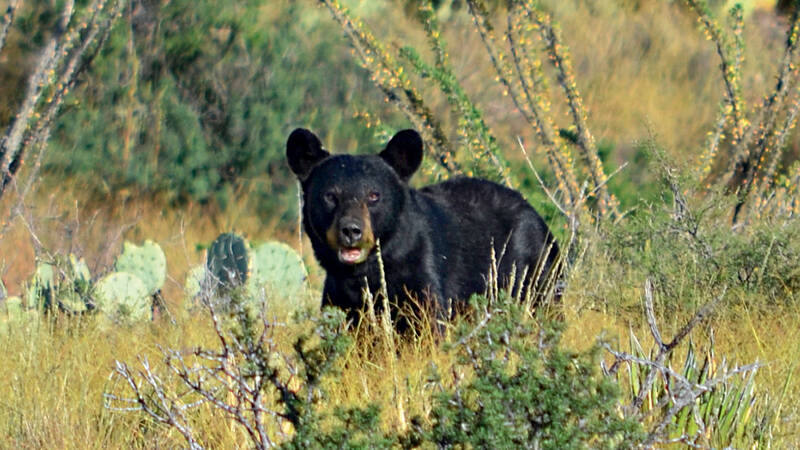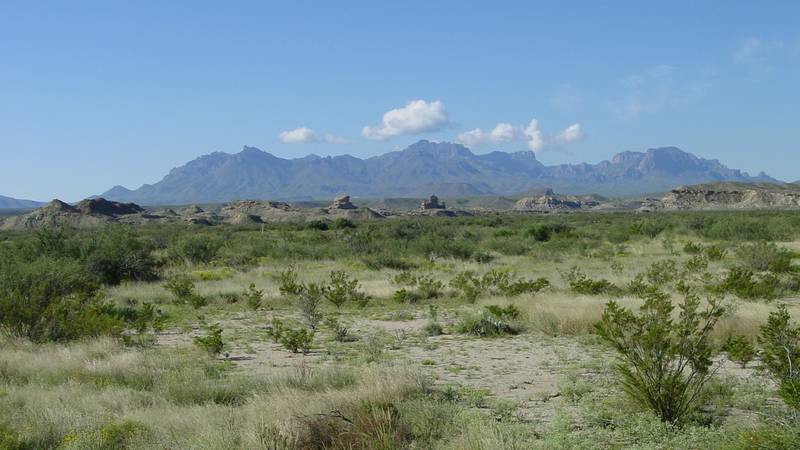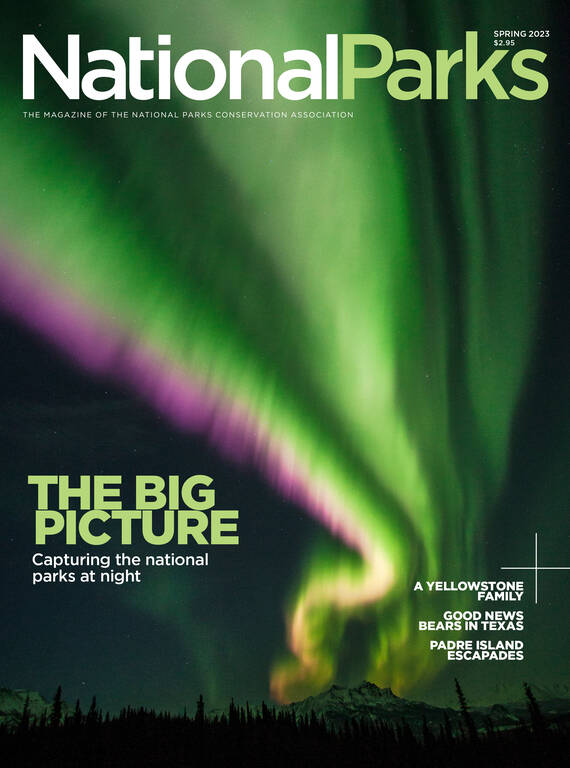Spring 2023
Comeback Bears
How black bears crossed an international border and miles of desert to recolonize Texas’ Big Bend National Park.
One day in 1988, a visitor came up to a ranger at Big Bend National Park with important information to share: He believed he had just seen several black bears while hiking in the park’s Chisos Mountains. Bears had been extirpated from the park and the rest of West Texas decades ago, so the visitor was told that what he had seen might have been javelinas — piglike mammals common to Big Bend. Unconvinced, the visitor said he’d taken some pictures and that he’d get them developed and send one over. He did, and the slide landed on the desk of Raymond Skiles, then Big Bend’s wildlife biologist. “That was the eureka moment,” Skiles said in an oral history interview with the Conservation History Association of Texas a couple of years ago. “I got to see that slide. And sure enough, there was a mother bear with three little cubs.”
When a large mammal is removed from its natural habitat, it’s very difficult for them to move back in, particularly on their own.
In the decades after Big Bend was established in 1944, a very small number of bears, perhaps wandering from the mountains of northern Mexico, had been spotted in the park, but this sighting was different. Skiles thought it was highly unlikely that small cubs had been able to cross up to 100 miles of desert and survive the ordeal. They must have been born in Big Bend, which meant the park, once again, had a resident bear population.

Predators are important components of healthy ecosystems. They regulate the numbers and distribution of their prey, which in turn may limit overbrowsing. In addition, some predators disperse seeds of the fruits they eat through defecation. That’s why the National Park Service has gone to great lengths to bring them back to areas where they had been eradicated. The agency, for example, has worked hard to restore wolves to Yellowstone National Park, fishers to Olympic National Park and condors to Redwood National and State Parks. These efforts, years in the making, typically involve impact studies, countless meetings between federal and state agencies, and extensive consultation with the public before the animals can be relocated to their new haunts. None of that was necessary at Big Bend. All the bears needed was a place to return to, and for the most part, all park staff had to do was stay out of their way.
“When a large mammal is removed from its natural habitat, it’s very difficult for them to move back in, particularly on their own,” said Tom VandenBerg, Big Bend’s chief of interpretation and visitor services. “It’s really one of the great feathers in the cap of Big Bend National Park.”

A National Park with Its Own Mountain Range
Among the 63 national parks, Big Bend is the only one that encompasses an entire mountain range — the Chisos Mountains.
See more ›Big Bend rangers did not assist the bears in their recovery, but as sightings increased exponentially, staff did prepare the park — and its visitors — for the bears’ return. They put up an exhibit about the bears in the Chisos Basin Visitor Center, wrote articles in the park’s newspaper and explained to visitors how to behave in bear country. A high fence was built around the park’s landfill, and flimsy doors were replaced by sturdier ones. Bear-proof trashcans and lockers were installed throughout the park. “One of the most challenging things might have been showing Texans how to open bear-proof food cans,” VandenBerg said.
Many decades ago, national parks such as Yosemite and Yellowstone set up bear feeding stations, and even after those closed, park managers largely tolerated it when visitors fed bears. Since the early 1970s, though, the Park Service has strived to keep people and bears apart and prevent bears from becoming conditioned to human food. Staff in bear country focused their efforts on training visitors to properly store their food and give bears plenty of room. Instances of bears slipping into tents or getting into cars have decreased significantly at those parks as a result. In Big Bend, meanwhile, they are virtually nonexistent.
RETURN OF THE GRIZZLIES?
“Here we kind of had that amazing, unique luxury,” VandenBerg said. “When the park was created, there were no bears here for all practical purposes, and so we were able to learn from all the mistakes of these other national parks.”
Black bears in Big Bend tend to be smaller than those elsewhere, which may be the result of the area’s desert climate and scarcer food, said Thomas Athens, the park’s wildlife biologist. They occasionally prey on deer and javelinas and eat insects, but their diet is mostly herbivorous. Athens estimates at least 30 bears live in the park, but he said that number can drop quickly if the crop of pinyon pine nuts and madrone berries is small. “In times of drought and low food availability, these bears will make long-distance migrations for food,” Athens said. “They pack up the bags and leave.” The park experienced such a dry spell last year, so when the bears zeroed in on the mesquite beans in the Chisos Basin campground, staff decided to close the campground for more than a month and let the bears have their fill.
Black bear sightings have increased not only in West Texas — transient males have also ventured into the north and northeast of the state as populations from neighboring states rebounded. In East Texas’ Big Thicket National Preserve, where NPCA has helped restore the longleaf pine ecosystem, the Texas Black Bear Alliance and others hope to bring bears back to their historic range. Black bear hunting has been illegal in Texas since the 1980s, but for the species’ recovery to be sustainable, locals have to be convinced of the ecological benefits associated with the bears’ return, said Ellen Buchanan, the alliance’s chair. “It’s the education of adjacent landowners and the general public as a whole that this is a good thing,” she said.
In the meantime, Big Bend’s bears are doing their part to expand the species’ range — females with cubs recently have been spotted north of the park near Alpine and in the Davis Mountains. “What’s really exciting,” Athens said, “is now we’re seeing the Chisos is this natural ecological steppingstone for the rest of Texas.”
About the author
-
 Nicolas Brulliard Senior Editor
Nicolas Brulliard Senior EditorNicolas is a journalist and former geologist who joined NPCA in November 2015. He serves as senior editor of National Parks magazine.



